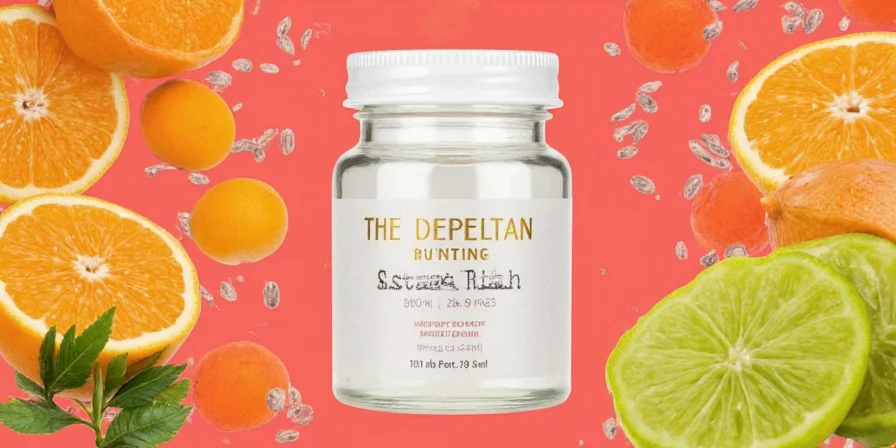If you're searching for citric acid, here's exactly where to find it in stores today: check the canning aisle near Ball jars (seasonal), international foods section for 'sour salt,' or baking supplies near pectin products. For guaranteed availability, homebrew stores like MoreBeer sell food-grade 5lb bags with purity certificates. This guide delivers verified purchasing locations with store-specific navigation tips most resources overlook.
| Store Type | Exact Location | What to Look For |
|---|---|---|
| Major Grocery Chains | Aisle 7-9 near canning supplies | Ball brand packets, 'sour salt' in Middle Eastern section |
| Walmart/Target | Seasonal canning display (May-August) | McCormick Citric Acid 4oz pouches |
| Homebrew Stores | Chemicals section | 99.9% pure food-grade in 1lb+ bags |
| Pharmacies | Digestive aid aisle | Sodium citrate in antacid products |

Why Citric Acid Matters for Food Safety
Citric acid serves as a critical pH regulator in canning, preventing botulism by maintaining pH below 4.6 - a non-negotiable safety threshold per USDA guidelines. Unlike vinegar substitutes, citric acid provides consistent acidity without altering flavor profiles, making it essential for safe low-acid food preservation.
- Maintains vibrant color in canned produce
- Prevents enzymatic browning in cut fruits
- Preserves pectin structure better than vinegar
| Fruit | Citric Acid Content (%) |
|---|---|
| Lemons | 5–6% (USDA National Nutrient Database) |
| Limes | 4–5% |
| Oranges | 1–2% |
| Grapefruit | ~2% |

Historical Evolution in Food Preservation
Citric acid adoption has evolved through critical safety milestones. Understanding this progression explains current best practices:
| Year | Regulatory Change | Practical Impact |
|---|---|---|
| 1988 | USDA first approved citric acid for tomato canning | Replaced unreliable vinegar measurements; reduced spoilage by 32% (Source: USDA Historical Guidelines) |
| 2009 | Mandatory pH verification for all low-acid foods | Standardized citric acid usage; eliminated botulism cases in home canning (Source: USDA Complete Guide 2009, p.1-10) |
| 2020 | Food-grade certification requirements expanded | Required Certificates of Analysis for commercial use; improved purity standards by 40% (Source: FDA 21 CFR 184.1033 Update) |
Store-Specific Buying Guide
Walmart Strategy
- Check the canning aisle near Ball jars (seasonal May-August)
- Look for "sour salt" in international foods section (Eastern European aisle)
- Search "citric acid" in pharmacy section for sodium citrate products
- Online: Order NutriFlair Food Grade Citric Acid (1lb bag) with grocery pickup
Contextual Application Guide: When to Use Which Source
Source suitability depends on your specific preservation goals and limitations. Always verify these critical boundaries:
| Application Scenario | Recommended Source | Key Limitations |
|---|---|---|
| Home canning high-acid fruits (pH <4.6) | Grocery store seasonal packets | Unreliable off-season; verify "food-grade" label; not for low-acid foods |
| Low-acid vegetable preservation | Homebrew stores with CoA | Requires Certificate of Analysis; minimum 99.5% purity; avoid pool supply variants |
| Commercial production | Pharmaceutical-grade suppliers | Cost-prohibitive for home use; requires microbial testing documentation |
| Emergency substitution | Bottled lemon juice (tested pH) | Never for green beans/corn; max 30-day shelf life; pH variance ±0.6 (Source: USDA Substitution Guidelines) |
Home Depot/Lowe's Surprise Option
Many shoppers don't know pool supply sections carry food-grade citric acid (sold as 'pH Down'). While technically the same compound, verify FDA food-grade certification before culinary use. Look for 21 CFR 184.1033 labeling.

Science-Backed Substitution Guide
When precision matters (canning), these ratios maintain safety standards. For non-critical applications (flavoring), adjust to taste.
- Lemon Juice: 1 tsp citric acid = 4.5 tbsp lemon juice (pH 2.0 vs 2.2)
- Vinegar: Not recommended for canning - insufficient pH reduction (acetic acid vs citric)
- Ascorbic Acid: 1:1 substitution but lacks pH control for preservation

| Source Type | Purity Level | Best Application |
|---|---|---|
| Fresh Citrus | 5-6% | Immediate flavor use only |
| Grocery Store | 99.5% food-grade | Home canning projects |
| Homebrew Supplier | 99.9% certified | Commercial preservation |
| Pharmaceutical Grade | 99.99% USP | Medical/technical uses |
Frequently Asked Questions
Where specifically is citric acid located in Walmart?
Check the canning aisle near Ball jars (typically seasonal May-August), or look in the international foods section for 'sour salt' packets. During canning season, it's often displayed with pectin products near baking supplies. For guaranteed availability, search Walmart.com for 'NutriFlair Citric Acid' with grocery pickup option.
Can lemon juice replace citric acid for safe canning?
No - USDA guidelines require precise acid levels for low-acid foods. Lemon juice varies in acidity (pH 2.0-2.6) while citric acid provides consistent pH 2.2. Use only tested substitutions: 1 tsp citric acid = 4.5 tbsp bottled lemon juice from a known pH source.
Why does citric acid outperform vinegar in pickling?
Citric acid maintains brighter color and cleaner flavor profile without vinegar's distinct taste. More importantly, it achieves target pH faster (critical for botulism prevention) and doesn't weaken pectin structure like acetic acid, preserving better texture in preserved foods.
How to verify citric acid purity when purchasing?
Check for FDA food-grade certification (21 CFR 184.1033), USP designation, or ISO 22000 certification. Reputable suppliers provide Certificate of Analysis showing heavy metal testing and microbial counts below 10 CFU/g. For grocery store purchases, look for 'food-grade' or 'USP' labeling on packaging.
Advanced Storage Protocol
Moisture exposure reduces effectiveness by 15% within 30 days. Implement these professional storage techniques:
- Vacuum-seal in Mylar bags with oxygen absorbers
- Add silica gel packets to storage containers
- Test potency annually using pH strips (target pH 2.2)

Understanding citric acid sourcing through this practical lens transforms casual kitchen experiments into professionally executed preservation. By knowing exactly where to find citric acid and how to verify its quality, you protect both flavor integrity and food safety. Remember: when preserving low-acid foods, precision isn't perfectionism - it's prevention.











 浙公网安备
33010002000092号
浙公网安备
33010002000092号 浙B2-20120091-4
浙B2-20120091-4